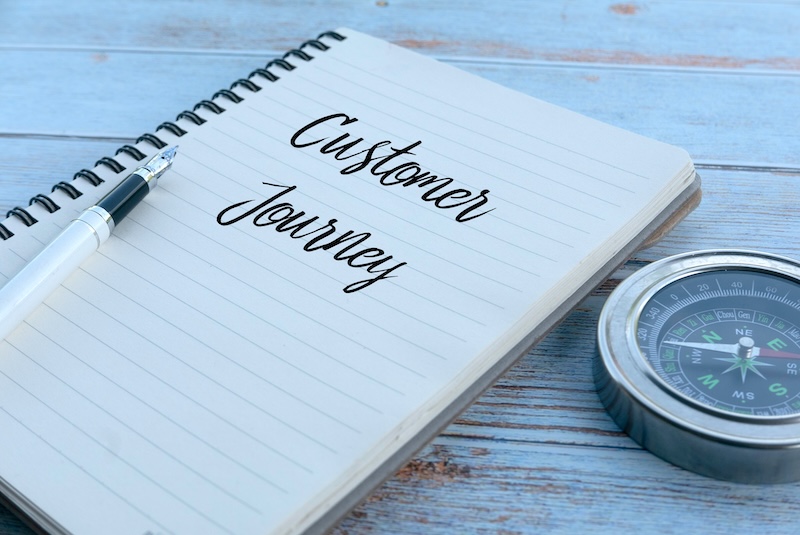Enhancing User Journeys for Better Conversions: A Comprehensive Guide to Boosting Your Business

Enhancing User Journeys for Better Conversions: A Comprehensive Guide to Boosting Your Business
In the bustling world of digital commerce, standing out is more than just offering a superior product or service. The way users interact with your digital presence—from the first click to the final conversion—can make or break your success. Enhancing user journeys for better conversions is not just a trend; it's a necessity. This guide will walk you through the intricacies of optimizing user journeys, offering actionable insights and practical examples to help you transform potential leads into loyal customers.
Understanding User Journeys
What is a User Journey?
A user journey is the series of interactions a user has with your brand before achieving a goal, such as making a purchase or signing up for a newsletter. Understanding and mapping these journeys allow businesses to identify touchpoints that require optimization.
Why User Journeys Matter
User journeys are crucial because they directly impact user satisfaction and conversion rates. A seamless journey can increase user engagement, reduce bounce rates, and ultimately drive higher conversions.
Mapping the User Journey
Step 1: Define User Personas
Before mapping user journeys, it's essential to understand who your users are. Create detailed user personas that include demographic information, user needs, and pain points. Tools like Xtensio or HubSpot's Make My Persona can help streamline this process.
Step 2: Identify Touchpoints
Touchpoints are the various stages where users interact with your brand. These include:
- Awareness: Discovering your brand through advertisements or social media.
- Consideration: Exploring your offerings through website visits or product pages.
- Decision: Taking action by purchasing or signing up.
Step 3: Map the Journey
Use tools like Lucidchart or Miro to visualize the user journey, mapping each touchpoint and action. This step helps identify where users might face friction and drop off.
Enhancing the User Journey
1. Optimize for Mobile
With more users accessing websites via mobile devices, ensuring a mobile-friendly experience is crucial. Implement responsive design and test your site on various devices.
Example: Mobile-First Design
<meta name="viewport" content="width=device-width, initial-scale=1" />
2. Improve Page Load Speed
A fast website is essential. Use tools like Google PageSpeed Insights to analyze and improve your page load times.
Code Snippet: Lazy Loading Images
<img src="image.jpg" loading="lazy" alt="Description" />
3. Personalize the Experience
Utilize data analytics to offer personalized content and recommendations. Personalized experiences increase engagement and conversions.
Example: Dynamic Content with JavaScript
function personalizeContent(user) {
if (user.preference === "sports") {
document.getElementById("content").innerHTML =
"Check out the latest sports news!";
}
}
4. Simplify Navigation
A straightforward navigation system helps users find what they need without frustration. Implement a clear menu structure and use breadcrumbs for easy backtracking.
5. Use A/B Testing
A/B testing allows you to experiment with different elements of your website to see what works best. Tools like Optimizely or Google Optimize can help conduct these tests effectively.
6. Incorporate Strong CTAs
A clear and compelling call-to-action (CTA) can significantly impact user decisions. Ensure your CTAs are visible and action-oriented.
Example: Effective CTA Button
<button class="cta-button">Get Started Now</button>
Leveraging Analytics for Continuous Improvement
Use Google Analytics
Google Analytics provides insights into user behavior, helping identify areas for improvement. Monitor metrics like bounce rate, session duration, and conversion paths regularly.
Heatmaps and User Recordings
Tools like Hotjar or Crazy Egg offer heatmaps and user recording features to visualize user interaction, revealing patterns and potential hurdles in the user journey.
Conclusion and Next Steps
Enhancing user journeys for better conversions is an ongoing process that requires continuous analysis and adaptation. By understanding your users, mapping their journeys, and implementing strategic optimizations, you can create a seamless and engaging experience that drives conversions.
Next Steps:
- Audit Your Current User Journey: Use the steps outlined to map and analyze your existing user journeys.
- Implement Quick Wins: Start with small, impactful changes like improving page load speed or optimizing for mobile.
- Conduct A/B Tests: Regularly test variations of your website elements to find what resonates best with users.
- Monitor and Adapt: Utilize analytics and user feedback to refine and enhance your user journeys continually.
By following these guidelines, you can ensure that your digital presence not only attracts visitors but effectively converts them into satisfied customers. Remember, the key to success lies in understanding your user and crafting a journey that meets their needs while aligning with your business goals.